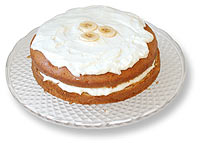 Why is it that the month of March has the worst produce? I live in California, the land of citrus trees, and the central valley, where row upon row of produce sprouts from the fertile soils, (sometimes with the help of genetic engineering). So why is it then, this month, with it’s cherry blossoms blooming, tulips pushing their way through hardened earth, and the first glimpse of bare arms flailing about in short-sleeved shirts, has the lousiest fruits and vegetables of the entire year.
Why is it that the month of March has the worst produce? I live in California, the land of citrus trees, and the central valley, where row upon row of produce sprouts from the fertile soils, (sometimes with the help of genetic engineering). So why is it then, this month, with it’s cherry blossoms blooming, tulips pushing their way through hardened earth, and the first glimpse of bare arms flailing about in short-sleeved shirts, has the lousiest fruits and vegetables of the entire year.
It’s about this time of year that even the citrus fruit looks as if it has seen its better day. I say “goodbye” to the last vestiges of winter mandarins, as they seem to rot even before I can bring them home and tuck them into the fruit basket sitting on my cluttered kitchen counter. The strawberries aren’t quite ripe, as their pale shoulders offer a stark contrast to the bruised tip of the fruit. And I simply won’t pay five dollars a pound for stony nectarines, their skin not even tinged with that lovely peachy pink from Chile.
And so I must resort to my old wintertime standbys, alas sweet succotash of summer, with your corn, sweet niblets of flavor, I must only dream of you for a few more months. To make myself feel better, I spice up the usual standards of winter just a little bit. What better way to spice something up, than a little pork product? And could there be a more bourgie pork product than the salty, the wonderful, pancetta? Cut into lardons, crisply fried, then set free to do their culinary magic on your vegetable of choice. In my case, brussels sprouts.
I know that for some this little cruciferous vegetable is not a favorite. And to these people I say, you have not eaten the brussels sprout prepared in its many incarnations; and you should really give this innocuous, cabbage-like vegetable a try again. There are many more ways to eat this side dish than boiled or steamed. For those squeamish about the brussels sprout, those who break into a sweat from the mere mention of the sulfuric vegetable, give them a try julienned. Slivered into tiny morsels of palatable greenery and sauteed with a bit of shallot, the vegetable turns into a mellow, tender, bit of spring (even if the dish is eaten in the dead of winter). Or how about roasted whole, with a bit of onion and olive oil, everything sulfuric about this veggie gets roasted out, and what you are left with is an intense, hearty adornment to any entree.
Brussels Sprouts with Pancetta
Serves 4-6
6 cups brussels sprouts, halved or quartered depending on size
1/4 pound pancetta, cut into small lardons
2 teaspoons olive oil (optional)
3/4 cup water or broth
pepper to taste
In a large skillet, over medium-high heat, brown pancetta. When brown and crisp, about 5 minutes, remove to a paper towel covered plate to drain. If the pan looks too dry, add a bit of olive oil, and the brussels sprouts. Sautee until the brussels sprouts brown slightly, an additional 5 minutes. Add the liquid, cover the pan to steam and let cook, stirring occasionally for about 10 minutes, or until vegetables are adequately softened. Remove the lid, turn heat up to high to let liquid cook out if any. Add the pancetta lardons back to dish, stir, then taste, seasoning with pepper. I find the brussels sprouts not to need much salt if any, due to salty nature of the pancetta.


 This has become a mantra for me, words to live by. When I was a kid there was a huge ad campaign by the fruit and vegetable board, telling people, kids in particular, as the commercials played during Saturday morning cartoons, to eat their five servings of fruit and vegetables a day for proper nutrition. Now for whatever reason, some 20 years later, this annoying little quotable has stuck with me, and in a sense, formed the way I eat.
This has become a mantra for me, words to live by. When I was a kid there was a huge ad campaign by the fruit and vegetable board, telling people, kids in particular, as the commercials played during Saturday morning cartoons, to eat their five servings of fruit and vegetables a day for proper nutrition. Now for whatever reason, some 20 years later, this annoying little quotable has stuck with me, and in a sense, formed the way I eat. I have eaten many-a birthday cake in my tender existence. In fact, I have even baked many of those same cakes. All of these baking experiences have brought me to two main conclusions:
I have eaten many-a birthday cake in my tender existence. In fact, I have even baked many of those same cakes. All of these baking experiences have brought me to two main conclusions:
